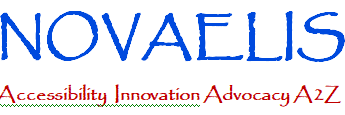Over the years, I’ve noticed that for many, hardware and software defines the experience of a person with a disability. For many people, their first exposure to accessibility concepts is through an “empathy” lab. Another commonly used name for this type of assistive technology collection of hardware and software is a “disability inclusion” lab. These places exist in companies like Google and universities like UC Berkeley. Over the past few months, I’ve been wondering if the terms being used are a misnomer and lead to some misunderstanding. I’m unclear whether empathy has any place in these labs, and I’m unclear whether the existence of the lab itself leads to greater inclusion. The real goal of many of these labs is to outline alternative experiences as applied to a specific task and build awareness beyond one’s very specific personal experience. Is the “empathy” lab an antiquated concept or does it just need some rebranding?
What Is an Empathy Lab Anyway?
The main goal of traditional empathy labs is to build awareness of the experience of people with disabilities. Labs are usually a collection of technical and non-technical solutions to everyday problems that represent different experiences.
In a traditional lab you may be able to have some hands-on interaction with screen readers, voice recognition, braille, and other access technologies. Within the lab, you may even find household items like oven mitts, helping define the experience of a person with ALS or other disorders that result in a mobility impairment.
The end result is usually a gained respect for the difficulty of use that many of the tools represent. Some additional takeaways from attending a lab include gratitude for one’s personal abilities and an over emphasized focus on the tools.
In lieu of the people who need to use them.
A Name Change
I feel strongly that the terms “empathy” and “disability inclusion” may be misleading or force lab participants to expect outcomes that may not have direct correlations. Visiting a lab doesn’t immediately make a person more empathetic. Furthermore, a lab doesn’t necessarily directly lead to more inclusion, though the presence of a lab may help us move more easily towards these goals. These types of labs are supposed to help showcase different experiences, so why not “experience lab” as a better name?
What’s Next?
I foresee that the components in the experience labs will change over time, especially with the tech heavy tools. Attitudes and societal values will make today’s accepted approach tomorrow’s cringe-worthy events. The one thing that will stay consistent is for an experience lab to be of value, it must accurately represent the intended experiences of people. This will require the help and insights of people with disabilities sharing their alternative and shared experiences. An additional thing I’d like to see is the experience lab extend beyond disability and consider gender, ethnicity, and preferences. Each of these parts of our identities heavily influence our experiences, and will help to add some depth and make these
